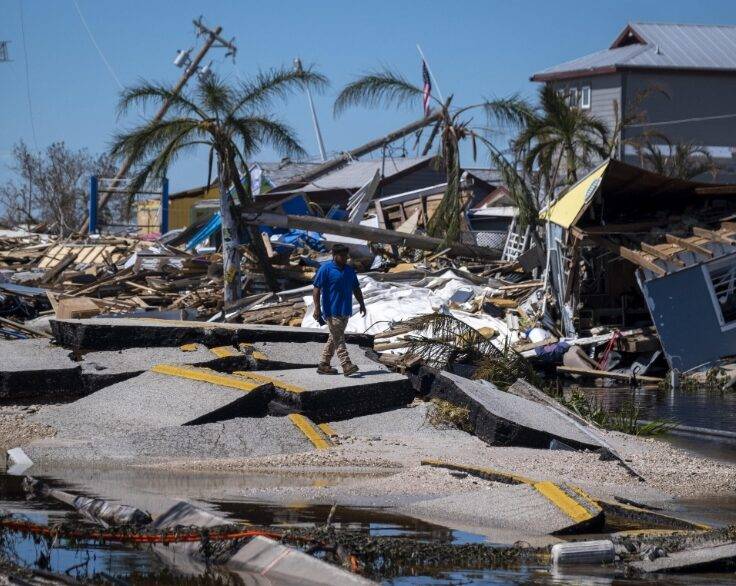Surging US Home Insurance Costs Driven by Rising Climate Risks
Jack Hierholzer expressed the sense of homecoming he felt when he moved back to Pensacola in the Florida panhandle. He mentioned that his kids were born there, and the neighborhood held many friends and some family, making it a special place for him.
In less than three years since his return, Jack Hierholzer is contemplating leaving Pensacola due to the significant increase in his home insurance premium. It has soared to $6,500, largely influenced by the escalating costs for insurers caused by extreme weather events intensified by climate change. Hierholzer, who works remotely, mentioned that he could relocate anywhere with a high-speed internet connection if the situation worsens. He asserted that if conditions become untenable, they are prepared to be mobile and move to a different location.
Rising premiums
In the United States, natural disasters caused destruction of assets exceeding $140 billion in the previous year, with approximately $90 billion of that amount being insured, as per Munich Re’s data. The reinsurance company, known for providing insurance to insurance firms, approximated that nearly 70 percent of the overall damage was attributed to Hurricane Ian, which wrought havoc on Florida’s west coast in September last year.
The Intergovernmental Panel on Climate Change (IPCC) leaves no room for doubt regarding the influence of human activity on global warming. Recently, the IPCC highlighted that man-made climate change is already having a tangible impact on numerous weather and climate extremes in all regions across the world.
The increasing frequency of extreme weather events has led to a significant surge in the costs of insuring against them. According to the Insurance Information Institute (III), an industry trade body, home insurance premiums in the United States saw an average increase of nine percent last year, with some states experiencing even higher spikes. The major factors contributing to these higher premiums are the escalating expenses of reinsurance and the mounting costs of rebuilding materials.
Mark Friedlander, director of corporate communications at the III, has noted a substantial year-on-year increase of 30 to 40 percent in reinsurance costs. He emphasized that climate risk is the primary driving factor behind this upward trend. Additionally, rebuilding costs have surged by approximately 30 percent over the past five years, primarily due to supply chain disruptions caused by the pandemic. These combined factors have contributed to the significant rise in home insurance premiums in the United States.
Regional variations
Various local factors at the state level have compounded the challenges posed by climate change. In California, for instance, insurance premiums are notably lower than the national average, approximately $1,300, primarily due to state laws granting the government significant influence over any premium increases. While this might seem advantageous for homeowners, it has presented difficulties for insurers, as they cannot fully transfer the mounting expenses of insuring properties against more frequent and severe wildfires. State Farm, one of the state’s major insurers, recently declared that it would no longer accept new homeowner insurance applications in California due to the escalating risk of catastrophic events.
In Florida, home insurance premiums have experienced a steep surge due to a combination of factors. This includes historically lenient laws that enable homeowners to sue their insurers generously, along with the escalating cost of payouts related to hurricanes. Mark Friedlander, director of corporate communications at III, emphasized that the convergence of human-made factors and climate-related risks has created a formula leading to exceptionally high levels of insurance premiums in the state.
Despite the surge in home insurance premiums, the percentage of people without home insurance in the United States has remained relatively stable at around seven percent, as per III. This consistency can be attributed to the requirement for US mortgage holders to have home insurance, which means that only those who can pay off their loans entirely can afford to take the risk of going without coverage. For homeowners like Hierholzer in Pensacola, whose insurance premiums now exceed their monthly mortgage repayments, the idea of forgoing insurance and solely focusing on paying off the mortgage becomes a tempting consideration.



